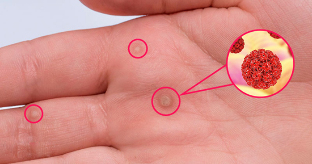
In this article we will cover the following:
- What are papillomas;
- what is the reason of their creation.
- where they are more common among men and women;
- Typical papilloma.
Papillary tumors are benign tumors located on the skin, mucous membranes. The reason they are formed is due to the human papillomavirus (HPV), which is transmitted in a variety of ways. The appearance of the shapes depends on the type of virus that caused them.
Transmission path
Human papillomavirus is transmitted:
- During sexual intercourse, including anal, oral-genital.
- Household. Microorganisms are likely to exist on infected personal belongings, toiletries, and towels. It easily penetrates through skin scratches and abrasions.
- During mother-to-child labor.
Can be spontaneous if the virus is transmitted from one area of the body, usually when shaving or waxing.
The incubation period (the time from when the HPV virus enters the body until the appearance of pathological signs) is from a few weeks to a few years.
The papillomas on the body most often appear in case of illness, pregnancy, alcohol abuse, psychological - emotional stress, hypothermia, along with a decrease in immune defense. The incidence of these diseases is the same for men and women.
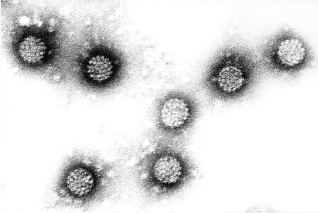
Human papillomavirus: type
Depending on the risk of skin cancer, papillomas fall into the following groups:
- Low risk of cancer (HPV 3, 6, 11, 13, 32, 34, 72, 73, 40–44, 51, 61 types).
- Moderate cancer risk (HPV types 52, 56, 58, 30, 35, 45).
- High risk of developing malignant processes (types of HPV 50, 59, 16, 18, 64, 68, 70, 31, 33, 39).
Low-risk microorganisms cause benign growth on the skin, mucous membranes.
Types of papillomas
Simple

They are also called vulgar, ordinary. Such development is usually caused by HPV types 26-29, 77, 63, 41.
A tingling, burning sensation on any part of the body. Then the development of a sphere is noted, their surface gradually becomes rough. At first, the tumor is fleshy, then dark. The size of the papilloma on the body ranges from 1 mm to
cmThese freshmen are single, multiple. In the second case, the daughter's small papilloma is located around the mother, first formed, usually the largest papilloma.
Their positions are the backs of the hands, fingers, the space between them, the chin area, the lip lip. There are such papillomas on the neck. The affected child's knee, which is caused by a child or crawl, is infected through small lesions on the skin.
Plantar
People with these shapes are infected with HPV types 1, 2, 4. The growth is similar to dry calluses, but has some characteristic differences.
Skin samples are preserved on calluses, not on the surface of the papilloma, the latter papules are smooth. The papilloma virus causes pain and discomfort increases when wearing shoes. Inside the papilloma, visible black spots, absent in calluses.
Neoplasms are sometimes self-destructive, more common in children. Sometimes small bubbles can be seen around a tumor. The posterior papillomas change into new papillomas over time.
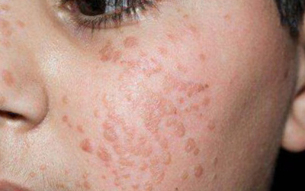
Flat papillae
Grows a round, long, oval shape, 1–2 mm above the skin surface. Flat papillomas are localized around the mouth, on the face, and upper half of the body. Sometimes papillomas form on the neck.
There are data on papillomas on the labia, cervix in girls, penis in men, in rectum, near the anus. These formations are located in groups, merging with each other. The flat flesh-colored papillomas, sometimes slightly darker than the rest of the skin, are formed under the influence of 10, 49, 28 varieties of the papillomavirus.
Threading
If people notice that small papillomas have appeared on the neck, the papillomas are usually threadlike. The second name of the formation isacrochordus. The second is caused by 2. 7 types of HPV.
In the first stage, the papillae on the neck look like small light yellow seals, then the papillae elongate, become rough, elongated, round like thread. A prominent feature of a similar papilloma on the neck is thin legs.
Usually, acrochordus is formed in men and women over the age of 40. Growth also occurs on the skin of the upper eyelids, armpits, and mammary glands, in the genital area.
Cursor
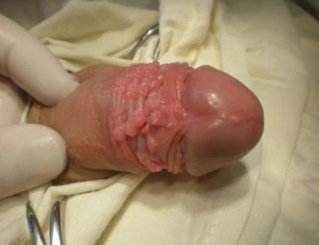
Formation data calledwarts,is caused by 6, 11, 44, 42, 54, 51, 55, 89 types of human papillomavirus in womenfemale and male.
Condylomas are small, single, flesh-colored tumors that are localized on the female and male genitals, around the anus. There are papillomas in the vagina, labia, cervix. In men, the foreskin tumor is located on the foreskin, tip of the penis, inside the urethra.
The individual elements sometimes fuse together, forming tumors that appear, outwardly like a rooster's comb, cauliflower. Tumors are characterized by very rapid growth, a wide lesion that can form within hours.
Pathology has a repeat course. It is more severe with concomitant sexually transmitted infections of the genitourinary tract (eg, chlamydia, gonorrhea, mycoplasmosis).
Condoms that form on the cervix, especially inside the cervical canal, are most dangerous during pregnancy. Hormonal changes stimulate rapid growth, resulting in tissue breakdown and secondary infection.
Papillomas in the mouth, larynx
Their appearance is related to the activity of 6, 7, 11, 72, 73, 57, 32 types of papillomavirus. Formations are circles on a thin or wide base. The mucous membranes around them are pale pink in color, without any obvious pathological changes. Surfaces of growth marks are pale pink, slightly white.
Single, multi-mass, painless tumors to be pressed. They are located at the bottom of the oral cavity, the back of the tongue, hard, soft, mucous of the larynx, in sizes 2 mm to 2 cm.
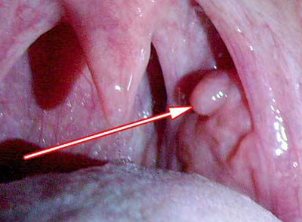
An overgrowth of the mucous membrane in the mouth will bleed if bitten, darkening due to bleeding outward. The state of health when such disease does not deteriorate, the oral cavity opens freely.
When in an adult, individual nodules are located on the soft palate, tonsils, glottis, feeling foreign bodies, coughing, voice becomes hoarse. If the lesions become extensive, these symptoms will worsen.
In children, pathological growth is usually bilateral, their appearance is accompanied by the following symptoms:
- Difficulty in inhalation, exhalation, arising after exertion, then with complete rest.
- Ho after running, playing too much.
- Asphyxiation attacks due tonarrowing of thelarynx (pathological stenosis that prevents air from entering the lower respiratory tract).
The appearance of various external papillomas is associated with infection with different types of HPV. To remove the tumor, you must consult a doctor. This should be done as soon as possible if the papilloma is large, rapidly increasing in size, causing discomfort and constant injury.














































































